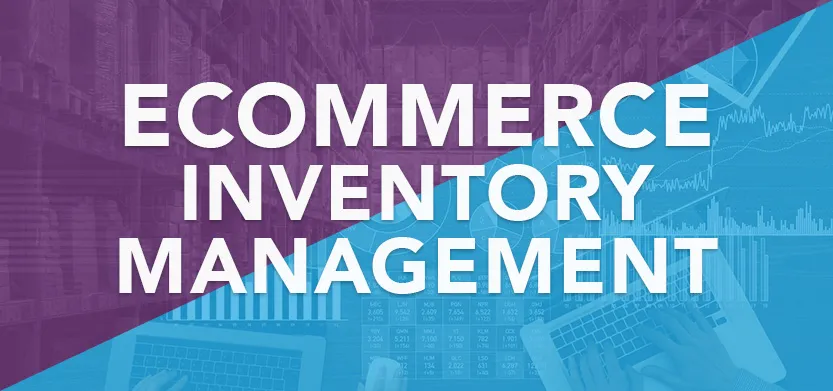
Posted in Digital Commerce, Software & Development
March 18, 2019
Ecommerce inventory management is tricky, but not impossible
Acro Commerce’s Digital Commerce Assessment helps ecommerce operators pinpoint exactly where their digital commerce operations are experiencing the most significant issues.
We recently discovered that reporting is a top area of concern.
This article will cover another trending issue, inventory management.
Inventory isn’t typically a big deal when a company is starting out small, but as companies scale up — adding multiple supply warehouses, third party marketplaces (i.e. Amazon) and potentially even physical store locations – inventory becomes quite challenging. Let’s take a look at some of the questions that are generating the most activity.
Disclaimer: All of the information we gather from the assessment is between us and the individuals who take it. No one else will see the answers. This post only talks in general terms and does not delve into any details specific to an individual or company.
Take the assessment
Before we get started, here’s a link to the Digital Commerce Assessment tool. Check it out for yourself and better understand your business’s ecommerce operation. This is the first step towards developing your optimal commerce ecosystem that will adapt to your growing business.
Inventory management, what we’re seeing
Effectively being able to manage inventory is not only a major time saver for ecommerce operators, but it can also be an incredibly useful tool for your front-line service staff and customers.
For instance, if you run an online store as well as physical locations, being able to quickly know if a product is in-stock is valuable information. It might save busy customers a trip to the store if the nearest store to them is out of stock for the product they want. It also lets front-line staff know whether they can get the item in from another nearby store if customers are requesting an item that is out of stock. Of course, from an operational point of view, knowing exactly where your inventory stands at any given time is crucial for resupply BEFORE you run out of stock.
The following assessment questions stand out from the rest in regards to inventory management. An explanation is provided for why these questions matter. We’ll look at solutions afterwards.
Are you managing your inventory with raw data/manual counts?
I cringe every time I see an answer come back where raw data and manual actions are utilized. While humans are great at many things, data entry is not one of them (and better left to the machines). Manual data entry for inventory management is error-prone, time-consuming and constant. As a business grows, the problem grows with it, again leading to scaling issues typically “solved” by adding staff.
Do you have to check in regularly with fulfillment or inventory management staff for accurate inventory counts?
This question goes hand-in-hand with the last but is more focused on the scaling aspect. Anyone who answers “yes” to this question is already in a situation that needs to be corrected as soon as possible. If a business's revenue is increasing, it’s growing. If the result of this growth is that more time is spent managing the inventory (or any other aspect), it’s only going to get worse as growth continues. Growth and scale are two different things. A business can grow, but can it scale? If a manual action is happening, the answer to this is “no” and the business's bottom line will suffer unless corrective action is taken.
Do you ever have to cancel orders due to inventory discrepancies?
Answering “yes” to this question tells us that the respondent is again already feeling the pains of growth without scale. Chances are, these people are seeing their time sucked away by manual inventory-related issues and swivel chair processes, and are therefore not able to give the proper attention to the things that will continue to help the business succeed, such as marketing, customer service, and forecasting.
How to make inventory management better
Correcting any of the questions above means changing your commerce architecture and some of the components within it. If you’re not familiar with the term “commerce architecture,” it’s the term given to the entire ecosystem of software components that run your business, not just your ecommerce platform. Should you be interested, we have a good on-demand webinar introducing this concept and explaining the different options. You can view it here.
The whole point of understanding your commerce architecture is to know that the components you use have a direct impact on your business's ability to scale. Successful scaling is all about integration and automation. In the case of inventory management, it means having the entire collection of inventory systems talking to each other automatically and in real-time. When this happens, the data is at your fingertips and so instead of calling a busy employee to confirm inventory you simply view the data wherever it’s kept. When inventory gets low at one location, flags can be put in place to initiate the purchase of more inventory or move it from one store or warehouse to another. The possibilities are endless, really.
Ultimately, investing in your digital commerce architecture now will pay dividends in time, letting you focus on your business instead of your inventory. That’s the goal.
Do you know your operational pain points?
Many businesses are suffering from operation pain points and don’t even know it. We tend to look at some problems as “just doing business,” when in reality these problems are 100% correctable. Digital commerce opens up the door to incredible amounts of efficiency. Once you know where to look, corrective action can be taken.
If you haven’t done so yet, I’d urge you to give Acro Commerce’s Digital Commerce Assessment a try and see what you come out with. By doing this, you’ll better understand your digital commerce operations and know exactly where to focus your energy.

